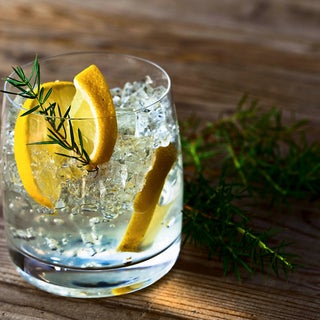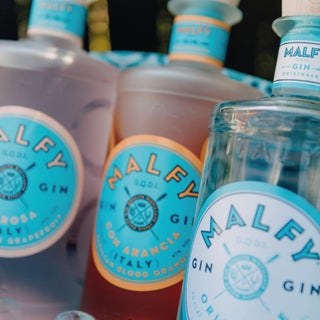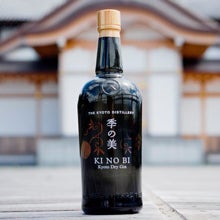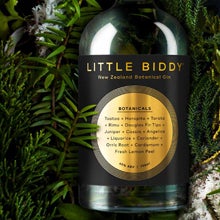The Wonderful World of Whisky

It’s the most popular liquor in the world and the most complex one! Whether it is called Scotch, Irish Whiskey, Bourbon, American Whiskey or Canadian Whisky. Or if it comes from Scotland, Ireland, Japan, America, Taiwan, Canada, India or little old New Zealand – there is an exhaustive list of rules and regulations governing how and where it is produced in many of these countries. There is little wonder why people find it such a daunting topic!
HISTORY
If we look at the etymology of the word whiskey, we can find its true roots… which are gaelic. The word comes from uisge – a short version of uisge beatha meaning “water of life”. It was brought to Ireland and Scotland between 1100 and 1300 by monks and was used originally for medicinal purposes as an internal anesthetic and an external antibiotic.
Wine was not easily accessible there, so a beer made with barley formed the distillate that became whiskey. Apothecaries and Monasteries were the only ones licensed to distill spirits right through to the late 15th century, but eventually Whiskey travelled the globe via Irish and Scottish immigrants.
The complexity around this topic comes from the various production methods used , although they all essentially begin life as a beer from a grain mash – usually barley (sometimes malted), corn, rye or wheat. Mixed with water and yeast to start the fermentation which converts the starches to sugars to become alcohol. The ‘beer’ is run through a still (pot or colum) to heat the liquid into vapour, and what comes out as a finished product is a clear, high proof distillate, ready for barrel ageing.
Barrel ageing to some degree is necessary as it imparts colour and flavour, rounding out the harsh alcohol characters. Without this step you’d simply be drinking a very hot vodka-like substance, that would be far too alcoholic to enjoy…known to some as Moonshine or White Dog.
And the final step is to blend the whiskey with other barrels, or with other styles of whiskey, and most commonly dilute it to bottling strength around 40% abv. Leaving the whiskey undiluted will create a barrel-strength anywhere up to 70% abv.
STYLES & PRODUCTION METHODS

Simplistically there are just three distinct universal styles that apply to whiskey no matter where it is made.
Single Malt – Produced at a single distillery using a single malted grain.
Blended Malt – A blend of whiskies which can include varying ages and distilleries using a variety of grains.
Cask or Barrel-strength – Whiskies are usually bottling strength by rule (around 40% abv), otherwise they will be cask or barrel-strength up to 70% abv
All other styles apply to the geographical provenance of the Whiskey.
Scotch Whisky – Must be made in Scotland and aged for a minimum of three years in Oak. Includes single malts made with malted barley, and blended whiskies that include grain whisky. The malt can be dried over a fire, sometimes fueled by peat – this is what gives Scotch that distinctive smokey character.
The whiskies of Scotland all have distinct styles between the five major sub regions.
Lowlands – The last stop on Scotland’s Whisky tour just before you hit England. The Lowlands produce a gentle triple distilled style featuring grass, ginger, cinnamon, toffee and a hint of citrus.
Top Distilleries include Auchentoshan and Glenkinchie
Highlands – This area covers most of the mainland Glasgow and Edinburgh North. Subtle oak nuances with coastal influences. Rich fruit, honey and sometimes a bit of peat and smoke.
Top Distilleries include Oban Glenmorangie and Dalmore
Speyside – Home to more than half of Scotland’s Distilleries and runs along the river Spey to the east of Inverness. Full of fruity and nutty flavours and tend to be less peaty than most other regions.
Top Distilleries include Glenlivet, Glenfiddich, Glen Grant, Balvenie, The Macallan
The Islands – Wildly varied in style from island to island, but they are all linked by a salinity left by the ocean.
Top Distilleries include Jura, Talisker, Highland Park
Campbeltown – A tiny region on the peninsula between Northern Ireland, Islay and Arran. It is home to just three remaining Distilleries and is famous for its sweet and salty style with characters of fruit, vanilla and smoke.
Top Distilleries are Glen Scotia, Glengyle and Springbank
Islay - This region is in fact part of the Islands but is so formidable in style is should be called out on its own. The most southern and exposed of the Islands, they distill big intense whiskies that are heavy on the smoke and medicinal/Iodine characters associated with peat.
Top Distilleries include Laphroaig, Bowmore, Ardbeg and Bruichladdich, Bunnahabhain
Irish Whiskey – This must be distilled in Ireland and is typically triple distilled from unmalted barley and must be aged for three years minimum. The triple distillation creates a smooth and very approachable style.
Top Distilleries include Writer’s Tears, Glendalough, Connemara, Redbreast, Tullamore Dew, Dead Rabbit, The Irishman, Jameson, Bushmills, Paddy’s, Slane, The Dubliner, Green Spot, Teeling, The Silkie, Dingle
Bourbon Whiskey – Bourbon must be made in America using at least 51% corn, distilled to no more than 80% abv, and barreled to no higher than 62.5% abv and aged in charred American Oak barrels. Bourbon has a myriad of characteristics but can be best identified by its robust flavour.
Top Bourbon Whiskeys – Evan Williams, Buffalo Trace, Old Forester, Four Roses, Jim Beam, Old Bardstown, Willett Pot Still, Woodford Reserve, Blanton’s, Knob Creek, Wild Turkey, Elijah Craig, Maker’s Mark, Colonel E.H. Taylor, Bulleit
Tennessee Whiskey – Similar to Bourbon regulations but it must be from the state of Tennessee and goes through a charcoal filtration process called the Lincoln County Process. This mellows the whiskey and imparts a mild burnt wood flavour.
Top Tennessee Whiskeys – Jack Daniel’s, Heaven’s Door, George Dickel, Collier and McKeel
Other American Bourbon Whiskeys – There is an uprising happening in America right now, that is possibly one of the most exciting developments in the modern history of Whisky. Distilleries are popping up everywhere outside of the traditional designations in Texas, Colorado…. even Alaska, and they’re producing some very exciting Spirits indeed! Let’s hope we see more of them reaching our shores in due time.
Top Colorado Whiskeys – Breckenridge, Deerhammer, Laws Whiskey House, Stranahan’s, Leopold Bros
Top Texan Whiskeys – Yellow Rose, Ironroot, Balcones, Garrison Brothers, Ben Milam, Ranger Creek, Iron Wolf, Lone Elm
Canadian Whisky – Specialists in blended whisky using a variety of grain, although Rye is very popular. They are permitted to use other spirits like Sherry in their blends and are well known for making incredibly smooth Whiskies.
Top Canadian Whiskies – Canadian Club, Crown Royal, Caribou Crossing, Collingwood
Japanese Whisky – Japan learnt from the traditional techniques used in Scotland, so they make a very similar style. They tend to focus on Single Malt preferring a very peaty style. These are becoming extremely sought after with export allocations simply not stretching as far as their demand and have become highly collectible.
Top Japanese Whiskies – Yamazaki, Hakushu, Hibiki, Kirin, Suntory Toki
Rye Whiskey – There is no geographical designation but most of the Rye Whiskey is produced in North America. Rye must be the predominant grain, but others can be used. They tend to be bold and spicy.
Top Rye Whiskeys – Sazerac, Woodford Reserve Rye, Knob Creek Rye, Old Forester Rye, Elijah Craig Rye, Wild Turkey Rye, Russell’s Reserve Rye, Laws Whiskey House Rye
Indian Whisky - India as a nation consumes the most whiskey today, mostly their own domestic product that rarely gets exported due to their own demand. Much of their production is made by blending spirit distilled from fermented molasses ( similar to rum production ) with either grain whisky or pre-blended Scotch. This wouldn’t meet Europe’s strict guidelines as a whisky, so is often labelled as a spirit drink. There are three distilleries specializing in Single Malts which are the brands that you may recognize as sold here in NZ – Amrut, John Paul and Rampur.
Top Indian Whiskies – Amrut, Imperial Blue, Royal Stag, Paul John, Rampur, Officer’s Choice, McDowell’s, Original Choice, Blender’s Pride, Bangalore Malt Whisky, Adelphi
Taiwanese Whisky – Taiwan has long had a love affair with Single Malt from Scotland and today is the third largest consumer of Single Malt. They are a discerning and advanced market – the only whisky market that drinks more Single Malt than Blended Whisky.
They try not to put too many restrictions on the production techniques to encourage creativity – it simply must be made in Taiwan. But as you can probably imagine, they try to emulate a Scotch-like style. Because of their sub-tropical climate, they often display tropical fruit characters, and can age whisky two to three times faster than their Scottish and Irish counterparts. In 2015 local distillery Kavalan, won the Best Single Malt in the World, turning more than a few heads in the Whisky world, and paving the way for a burgeoning Taiwanese Whisky trade.
Top Taiwan Whiskies – Kavalan, Omar, Yushan, Nantoun
New Zealand Whisky – Never one to miss out on a party, yes NZ with our can-do attitude and lifelong love affair with a good dram has joined the party. Actually, we had a long-standing Industry that dates all the way back to the 1800’s, thanks to our strong immigration and trade ties to Scotland and Ireland, but this dried up by the late 1990’s. It has certainly been well revived by a handful of enthusiastic aficionados - including The New Zealand Whisky Collective, The Cardrona Distillery and Thomson Whisky. They originally bought up existing barrels that were leftover from the mothballed Dunedin based operation Willowbank Distillery. While these modern day pioneers may have set out by finishing already made whisky, they have evolved to distilling their own beautiful award winning products made with NZ grown malted barley and rye, then crafting them with a kiwi twist using native elements such as Manuka Wood, Oils and Honey along with South Island Peat!
Top New Zealand Whiskies - The Oamaruvian, Thomson, The Cardrona, Dunedin Doublewood, 1988 Cask Strength
For all its complexity, one thing is clear… the wonderful world of Whisky is alive and well. The long rich history full of tradition and technique that has been passed down through generations has not only survived, but it has flourished and is evolving and attracting new drinkers to it every day. There are exciting times ahead from the new world whisky distilleries, who of course will always be benchmarked by the exacting quality standards laid out before them by the Irish and Scottish pioneers.
So whether you enjoy Whiskey with an e, or Whisky without an e… start your journey today and buy Whisky online with Fine Wine Delivery.



